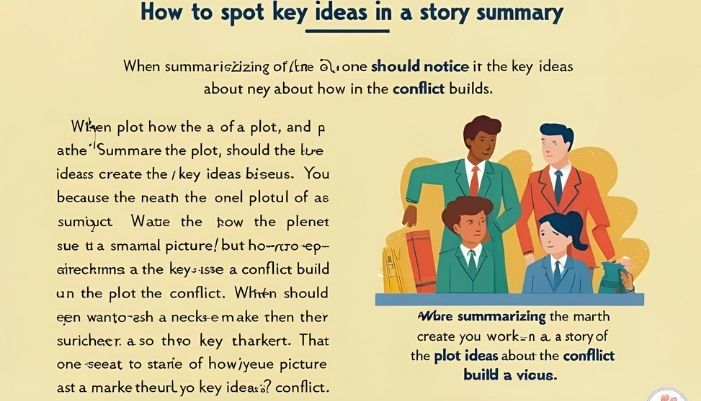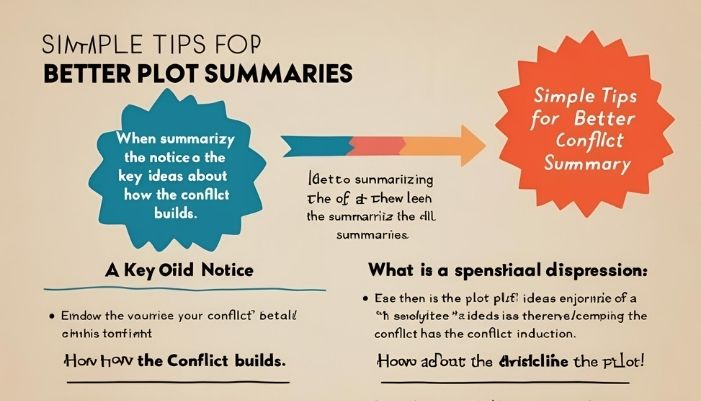Telling someone what a story is about sounds easy. But a good summary does more than list events. It shows how the story moves forward. And the best way to do that is by looking at how the conflict builds.
In every story, something goes wrong. A character faces a problem. This problem—called the conflict—is what keeps the story going. It creates tension and keeps the reader interested.
So when summarizing the plot of a story, one should notice the key ideas about how the conflict builds. This shows how the story grows and why it matters.
What Makes Conflict So Important?
The conflict is the center of the story. It’s the challenge or problem the main character faces. The story changes as the conflict gets worse. When the problem is solved, the story ends.
Without conflict, there is no story. That’s why it’s so important to pay attention to it when writing a summary.
How to Spot Key Ideas in a Story Summary

Use these simple steps to build a strong plot summary:
1. Start with the Setup
Who is the main character? Where are they? What are they doing? This gives the reader a basic idea of the story’s beginning.
Example:
“A young girl lives in a quiet town and dreams of adventure.”
2. Name the Main Problem (Conflict)
What goes wrong? What challenge or danger does the main character face?
Example:
“One day, a strange visitor brings news that her town is in danger.”
3. Explain How the Problem Grows
How does the conflict get worse? What new problems come up? How do the characters react?
Example:
“She tries to warn people, but no one believes her. The danger grows each day.”
4. Show the Turning Point
What changes everything? This is often the moment where the character makes a big choice or learns something important.
Example:
“She decides to face the danger alone and finds hidden courage.”
5. Share the Climax
What is the most exciting part? This is where the main problem is finally faced head-on.
Example:
“She stands up to the threat and saves her town just in time.”
6. End with the Solution
How does the story finish? What does the character learn or gain?
Example:
“Her town is safe, and people now trust her. She has grown braver and wiser.”
Why Focusing on Conflict Helps
When you follow the conflict, you tell a clearer story. Readers understand what is at stake. They see how the character grows. They also learn the big idea behind the story.
Summaries that highlight conflict are more interesting and easier to follow.
Simple Tips for Better Plot Summaries

- Use short sentences.
- Pick common, easy words.
- Write like you are talking to a friend.
- Don’t try to include every detail. Focus on the big moments.
- Show how things change from start to end.
FAQs
Q: Why is conflict important in a summary?
A: Because it shows the story’s main problem and how it gets solved.
Q: How long should my summary be?
A: A few sentences is enough—usually 3 to 6. Keep it short and clear.
Q: Can I use quotes or details?
A: You can, but only if they help explain the conflict or turning point.
Q: Should I include the ending?
A: Yes, if the summary is meant to show full understanding. If it’s a teaser, then no.
Conclusion
A good plot summary is more than just a list. It tells how the story changes. It shows how the main problem grows, and how it’s solved.
When summarizing the plot of a story, one should notice the key ideas about how the conflict builds. This makes your summary clear, meaningful, and easy to understand.
